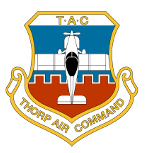|
So, there I was at the end of the runway - 4606 MSL......OAT was 18 deg F - no wind, runnup complete, feeling very pretty and off I go - my mixture was set for takeoff - normal (actually impressive with 10 gallons in the tank) climbout at 95 mph and was at pattern altitude 900 AGL about 5000 feet down the runway - leveling off and turning crosswind, I glanced at my CHT/EGT gauge and the EGT was at 1400 plus - WHOA!! - I enriched the mixture a few turns and it still was not going down - backed off the throttle a bit and went full rich down it went, but it took me a few miles to get it to stabilize around 1300, with the prop turning 2350 with the mixture much richer than I would normaly run - makes sense by and large as the temps were chilly and altimeter 30.45, thereby some cool thick air with lots of oxygen, rendering a leaner fuel air mixture. After a few minutes of admiring my surrounding and all being as it should be, I was about to do some wingovers and other accelerated fun stuff, so I set the prop at 2600......and up went the EGT..... - so I put in the mixture a bit and got it stable again - after getting my yank and bank fix, I transitioned to straight and level and started messing with the prop/throttle settings a bit and, shornuff, I could vary the EGT without changing the throttle and mixture, but by merely increasing or decreasing the RPM - at 2350 RPM WOT and the mixture set to 1300 degrees, if I dialed the prop out to 2600 RPM, the EGT would read 1350 degrees - an increase of 50 degrees - going back to 2350 RPM, same throttle and mixture settings, back down it went......go figure?!?!.........
Now, having said all that, I have noticed in the past, during cooler temps, that when descending local into the pattern at speed, the EGT would climb a bit and I have to dial in the mixture, but I always thought that normal during decent, so did not pay much attention to it from an RPM/EGT relationship. The CHT were nominal with no noticeable change throughout.
I suppose drilling out the jet to a slightly larger size might help with keeping the EGTs down (slightly richer mixture)during winter flying, but that pesky Law of Unintended Consequences then comes into play, and the carb was recently rebuilt (last June) with all of 40 hours on it, so I'm inclined to leave be.
Single Probe on #3 cylinder is 1.5 years old, as is the gauge.
Thoughts and feelings?
|







